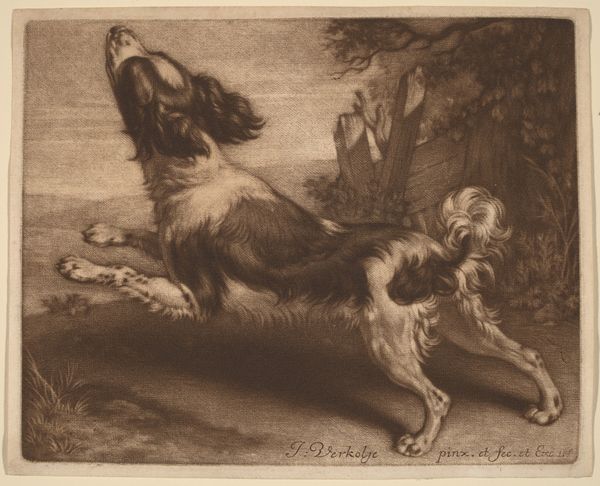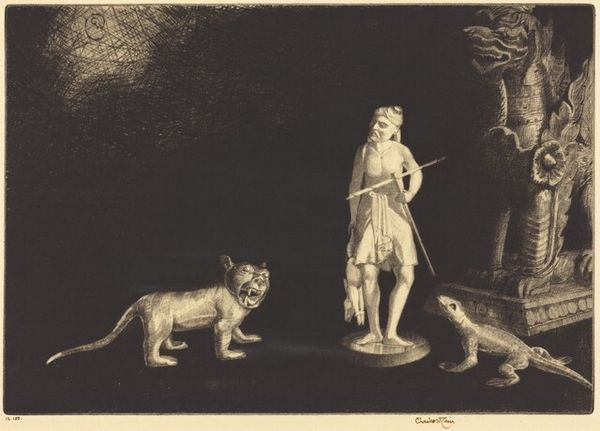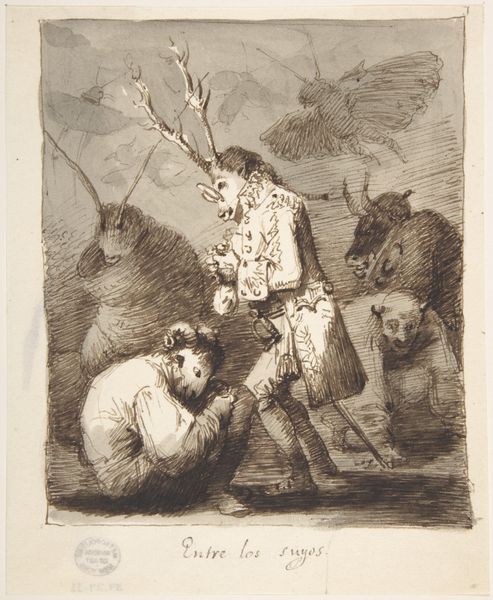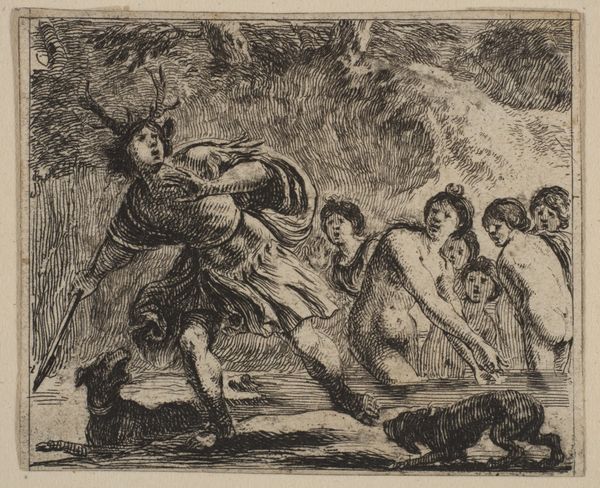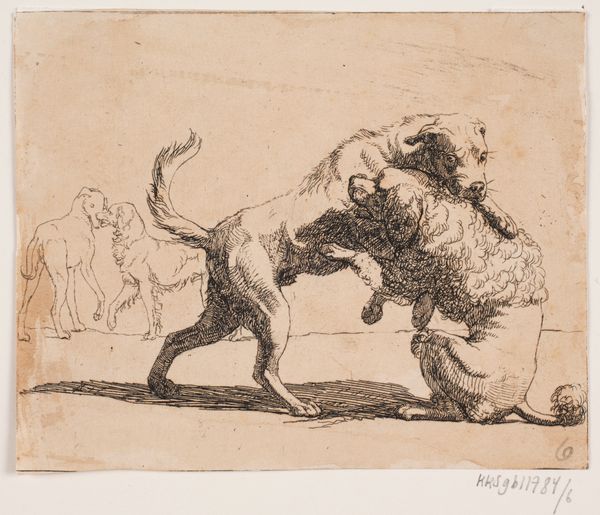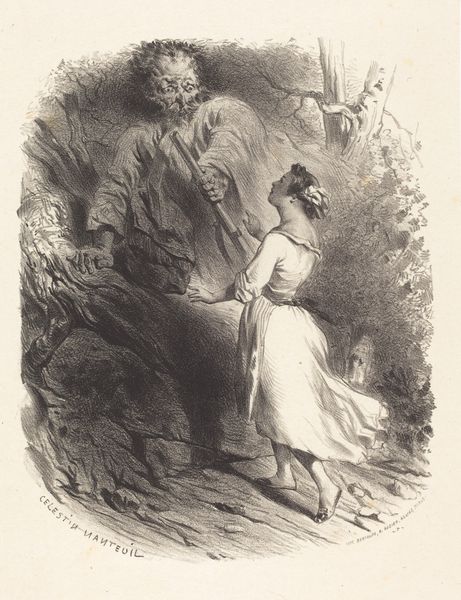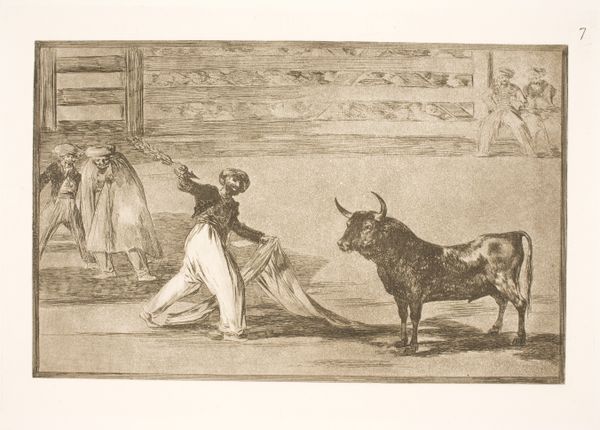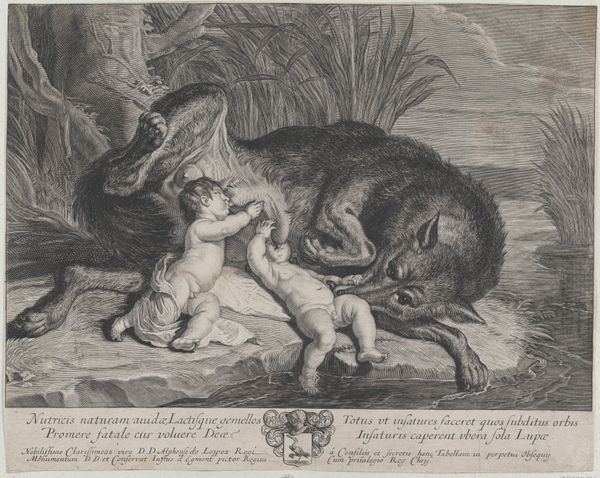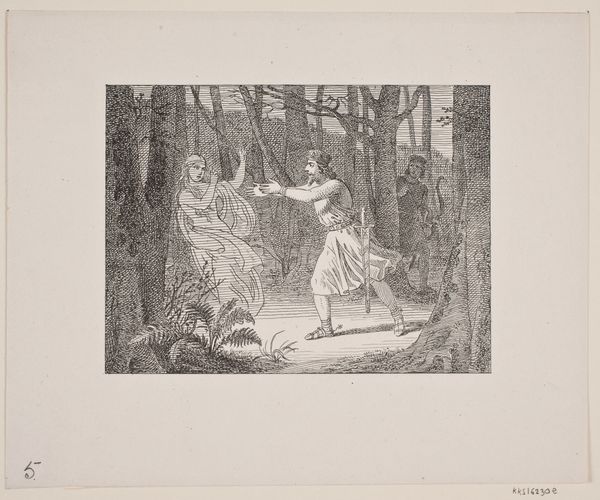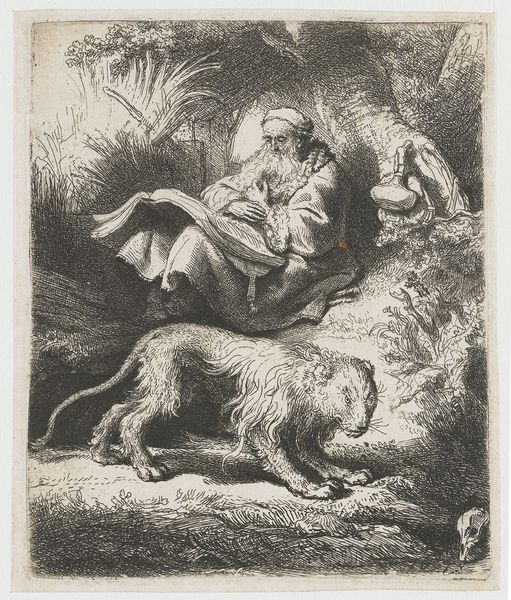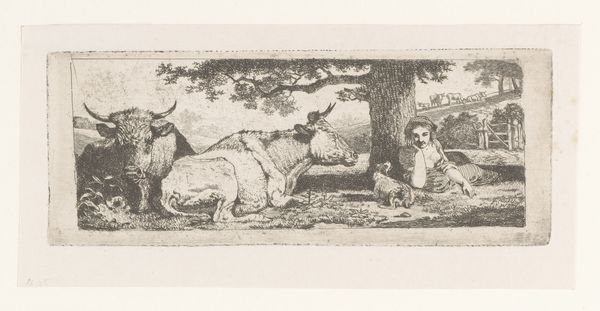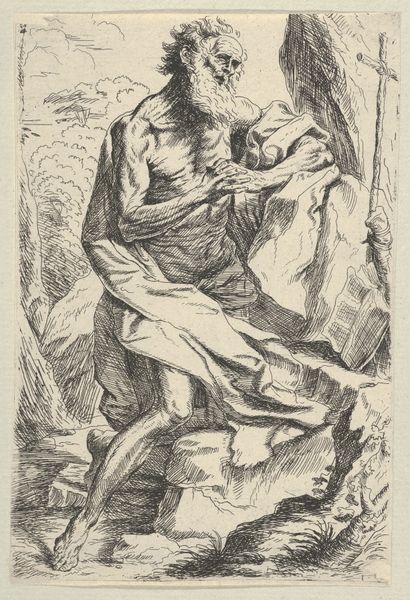
Dimensions: height 556 mm, width 718 mm
Copyright: Rijks Museum: Open Domain
Curator: Here we have Charles Rochussen’s "Scène uit ballet Roodkapje en de wolf," a drawing dating from between 1865 and 1868, here at the Rijksmuseum. Editor: The drama just leaps off the page, doesn't it? The frenzied energy in those lines! I’m particularly drawn to the tonal contrasts, especially around Little Red Riding Hood's dress – such evocative use of a simple pencil. Curator: It really captures the popular imagination around fairy tales at the time. Ballet, like opera, became a focal point for nationalist expression and moral instruction. Remember, Perrault’s versions, in particular, carried strong societal warnings. Rochussen here plays into that visual culture. Editor: Absolutely! The figure in the background is also wonderful - a murky presence of indistinct form, and only through a focused study do you discover how such a being, composed from almost nothing, generates movement. Curator: Consider also the wolf’s stance: it's theatrical. By the mid-19th century, the wolf was often used in political cartoons, representing forces perceived as threatening social order and family values. Editor: True, it’s a menacing symbol. Note the compositional choices. Rochussen is creating tension between this textured figure and the flowing costume of Red Riding Hood, which makes for a fascinating contrast. The wolf feels impulsive, a destructive urge, whilst Red Riding Hood displays a certain fragility through light lines. Curator: And Rochussen is shrewd in this play. This balance – of nature versus culture, perhaps, but certainly of danger and innocence – is critical for his audience, reflecting popular anxieties. It allows people to think of themselves as protectors and guardians against such evils. Editor: I see that. But it strikes me, that regardless of the symbolism and historicism at work, there is still that base pleasure of purely visual analysis to behold. The simple strokes, the tonal dynamics - it allows each person to construct their own, uniquely imagined theatre within this singular work. Curator: A vital point to consider when thinking of artwork and their continuing reception and interpretation over the decades. Editor: Indeed.
Comments
No comments
Be the first to comment and join the conversation on the ultimate creative platform.
